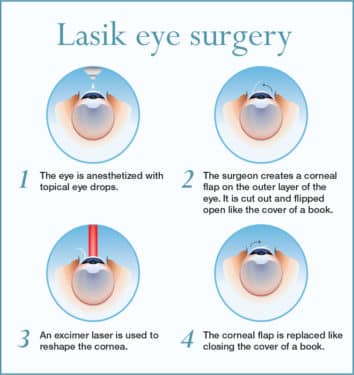Evaluating The Perks And Drawbacks Of Standard Cataract Surgical Treatment As Opposed To Laser-Assisted Approaches
Evaluating The Perks And Drawbacks Of Standard Cataract Surgical Treatment As Opposed To Laser-Assisted Approaches
Blog Article
Short Article Author-Langballe Hebert
When contemplating the choice between typical cataract surgical procedure and laser-assisted methods, you may find yourself considering the benefits and drawbacks each method offers. The decision surpasses the surface area degree of price and precision, delving into the world of lasting end results and client complete satisfaction. As you navigate through the complexities of these 2 approaches, it ends up being vital to comprehend the nuanced information that can substantially affect your aesthetic quality and total experience. Remain tuned to reveal the important aspects that will direct your decision-making process in this critical facet of eye treatment.
Typical Cataract Surgical Treatment Benefits And Drawbacks
When considering standard cataract surgical procedure, you might discover that it's a well-established and widely-used technique. In this procedure, a specialist makes a small cut in the eye and uses ultrasound to separate the cloudy lens before removing it. Once the cataract is removed, a synthetic lens is inserted to restore clear vision.
One of the major benefits of conventional cataract surgical treatment is its record of success. Many clients have actually had their vision substantially enhanced via this treatment. In addition, standard surgery is frequently covered by insurance coverage, making it an extra obtainable choice for lots of people.
However, there are some drawbacks to conventional cataract surgical treatment also. Healing time can be longer compared to newer techniques, and there's a somewhat greater threat of complications such as infection or swelling. Some patients might likewise experience astigmatism or call for analysis glasses post-surgery.
Laser-Assisted Techniques Benefits And Drawbacks
Discovering laser-assisted methods for cataract surgical treatment unveils a contemporary method that utilizes laser innovation to carry out key action in the treatment. Among the primary advantages of laser-assisted cataract surgery is its accuracy. The laser enables very exact cuts, which can lead to better visual outcomes. In addition, using lasers can decrease the amount of ultrasound power required during the surgery, possibly reducing the danger of difficulties such as corneal damage.
On the downside, laser-assisted methods can be more costly contrasted to standard methods. This expense mightn't be covered by insurance coverage, making it less obtainable to some individuals.
Another consideration is that not all cataract cosmetic surgeons are learnt laser innovation, which might limit your options for choosing a surgeon.
Lastly, while read review can automate specific aspects of the treatment, the surgery still needs a knowledgeable specialist to make certain effective outcomes.
Comparative Analysis of Both Techniques
For a detailed understanding of cataract surgical procedure strategies, it's important to perform a relative analysis of both standard and laser-assisted approaches.
Conventional cataract surgical treatment involves manual incisions and using handheld tools to separate and remove the cloudy lens.
On the other hand, laser-assisted cataract surgical procedure utilizes sophisticated technology to create specific lacerations and separate the cataract with laser power prior to removing it.
In terms of precision, laser-assisted techniques supply a higher degree of accuracy compared to traditional methods. Using lasers enables personalization of the treatment based upon each person's eye anatomy, potentially leading to much better aesthetic results.
Nevertheless, laser-assisted cataract surgical treatment has a tendency to be more pricey than typical surgery, which might limit ease of access for some patients.
While both techniques are effective in restoring vision damaged by cataracts, the selection in between conventional and laser-assisted strategies frequently depends upon variables such as expense, precision, and individual patient demands.
Consulting with your eye doctor can help determine one of the most suitable approach for your cataract surgical procedure.
Final thought
To conclude, when determining in between conventional cataract surgical procedure and laser-assisted techniques, consider factors like price, accuracy, and private demands. Conventional surgical treatment uses a tried and tested record and insurance policy coverage yet may include longer recovery times. Laser-assisted strategies provide greater precision and personalization however can be more expensive and not constantly covered by insurance policy. Ultimately, the option between the two techniques relies on what is crucial to you and your certain situation.
